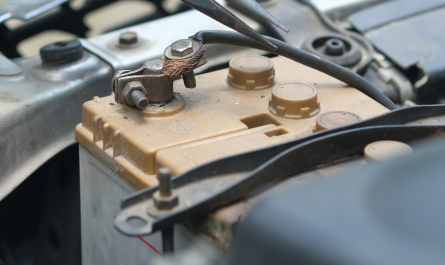Only a tiny percentage of Indians invest in residential and commercial properties that pay rent to maximize their returns on investment. In the face of stock market volatility and low rates of interest being provided on fixed deposits (FDs), we have noticed a surge in the purchasing of high-value assets. Following that, investors divide the revenue and expenses in accordance with their stake. on the web
We have witnessed in the past years the emergence of fractional ownership, in which a practice in which investors that are otherwise unrelated, come together to fund a high-level investment opportunity (mostly commercial). This not only lowers the entrance cost for prospective investors, but also provides them with all of the benefits of asset ownership without the need for large quantities of money up front. Through fractional ownership, investors enjoy the advantages amongst co-investors while decreasing ownership risk.
Table of Contents
How does it work?
The size, duration, and number of actors all influence the structure of a property. If a grade-A office tower costs around Rs 150- Rs 500 crore, the framework will generally be a private limited company that forms a SPV with a minimum contribution per purchaser.
The SPV structure is an Association of Persons (AOP), which acts in the same way as a private limited company. A separate property rental and facility management agreement is also drafted, instructing all owners to use the property in accordance with their shareholding. Assetmonk is one of India’s fastest-growing fractional ownership platforms offering investment options in major Indian cities such as Bangalore, Chennai, and Hyderabad. After thorough due investigation, we list properties with IRRs ranging from 14 to 21 percent.
Why should you invest in fractional ownership?
Fractionally owned commercial real estate offers the advantage of allowing small investors to invest in high-end properties. It’s an excellent option for retail investors who can’t afford commercial real estate (CRE) due to its high cost. Furthermore, fractional investments enable investors to diversify their portfolios across numerous assets and locations, significantly lowering portfolio risk. They can also be sold on the secondary market at any time, providing liquidity.
Commercial real estate isn’t the only sort of fractional ownership that’s gaining appeal among the rich. In the post-pandemic age, Covid-19 has left a considerable effect on urban households, and fractional ownership of vacation homes is catching up quickly. Buyers these days are seeking residences with a view of the beach or a hilly environment, but for a fraction of the price. Fractional ownership is an option for escaping the city on occasion.
It’s tough to overestimate the attractiveness of such a paradigm, especially in light of how the epidemic has undercut much of the charm of inner-city life and increased the desire to abandon it. Every investor benefits from their investment in terms of rental income, capital appreciation, and personal use of their property in the event of a second or third home.
It should be noted that a fractional owner of commercial real estate may not have any access rights to the property in issue. If he sells the property, he may be entitled to a portion of the rentals and appreciation gains.
Fractional ownership is a notion that has gained support in industrialized countries such as the United States, Singapore, and Hong Kong, and is now gaining interest in India. A fractional ownership platform provides a conduit via which individuals may come together to acquire an asset, enjoy the return it creates, and then sell their portion when they wish, resulting in financial gains. The platform also administers the asset and enables any dividends from the asset, which are immediately distributed to fractional owners. In basic terms, fractional ownership allows a person to own a portion of a pre-leased asset worth Rs 50 crore with a tiny capital amount of Rs 25 lakh and enjoy the financial benefits of a Rs 50 crore asset owner, such as an institutional-grade asset, a verified tenant, and a cash flow.
Fractional ownership aids in the creation of a diversified portfolio that distributes and reduces risk. With just Rs 1 crore, an investor may now purchase four different types of assets in four separate places, with the support of professionals with specialized expertise and significant experience to manage the asset while working on their behalf.
Is it safe to invest in fractional ownership opportunities?
As a result of fractional ownership, retail investors have access to some of the most desired properties with a strong tenant profile. People may now pool their money to buy a Rs 100 crore office building, for example, with each paying at least Rs 25 lakh. Young Indians, in particular, are getting interested in it since the tenants are well-established businesses (so your rental income is assured); and when an investor wants to leave the property, he may sell his portion to other investors and go.
Accountability of fractional owners
A property management company is usually in charge of a property with many owners. This company is in charge of the building’s construction/renovation as well as its ultimate sale. Depending on the circumstances, these liabilities may be allocated to a single owner or spread among numerous owners. You must pay your fair share of property taxes, including additional taxes in areas where fractional transactions are subject to increased tax assessments.
While there is some financing involved, the majority of the money is donated in cash by the owners. Because investors may not have genuine ownership over the property, lenders are wary of supporting such arrangements. A Grade A commercial facility, such as an office building, factory, or industrial warehouse, costs a lot of money. So it’s no surprise that it’s long been a favorite of the rich. In such a case, partial ownership provides mid-segment buyers with a completely new financial asset class to select from, one that is suited to their budget.




